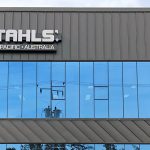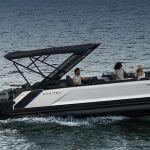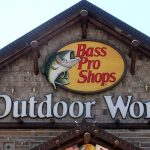The outdoor and action sports industries have been evolving over the past few years towards eco-friendly practices in every aspect of business. This transition is occurring in response to consumer demand and better availability of green materials. Footwear brands, apparel companies, and also many retailers have decide to make environmentalism their brand cornerstone and they have invested heavily in creating more eco-friendly products, marketing materials, POP displays, and infrastructure.
Apparel companies have been incorporating green design elements for years; and today, more brands are taking up the cause. Even some pack manufacturers are looking at green materials and design processes. For example, Osprey has created a line of technical packs made with recycled or recyclable materials.
However today, the majority of the advances seem to be taking place in footwear. Simple has created their line of eco-friendly shoes, dubbed the Green Toe initiative; Timberland is putting FDA-style “Green Index” labels on all of their footwear and powering their warehouses with solar energy; Teva is launching their “curbside collection” made out of recycled plastic bottles; and Merrell has licensed the Patagonia name and launched their own “green” footwear line.
In addition, Simple and Deckers are hosting the first ecoETHICS forum at the WSA show on February 3rd, 2007. The forum is designed to bring all footwear companies together to share best practices in green design and marketing. In attendance will be Angel Martinez, CEO of Simple Shoes/Deckers Outdoor Corporation; Craig Throne, director of Patagonia Footwear; PromoStyl; The Leather Group; retailers; and industry guests will round out the participants. The panel will be moderated by Pat Devaney, sr. VP of product & development for Simple Shoes/Deckers Outdoor Corporation.
Simple is probably the most relevant case study in the success that is possible with a well-run green initiative. Last year, the brand launched its “Green Toe” initiative as its flagship eco-conscious line. Since then, sales for the brand have increased dramatically. For the year-to-date at the end of the third quarter, Simple sales were up 65% to $9.9 million.
The re-branding and re-focus on eco-conscious processes and materials, not only impacted the bottom line for Simple, but also rejuvenated the entire organization. “The Green Toe initiative has really acted as a beacon for our entire product line,” said Tracy On, the event manager for Simple who is heading the ecoETHICS project. “Now we are incorporating elements from the Green Toe initiative throughout our entire line.”
This shift is not limited to Simple or Deckers. It is really being driven by several different factors at once. Consumer demand for cleaner products is the primary driving force, but better technology in the natural, recycled, and recyclable materials industries is also a key influence. Toray recently developed recyclable Nylon. Teijin is working with Patagonia on cradle to cradle polyester recycling. All of this is making it easier for product designers to incorporate green materials into their lines without sacrificing style or performance.
“The footwear industry is really coming together,” said On. “Its not just Simple, other footwear companies are changing their business models and this Capitalism of the Consciousness is starting to reach a tipping point. This is a topic that needs to be discussed with the increase in consumer demand and the availability of the materials; we can pool our resources and be much more effective.”
In addition, several retailers are finding advantages in selling more eco-conscious brands and creating a cleaner, more efficient infrastructure. Beezer Molten, owner of SC-based Half-Moon Outfitters, just completed a 10-month renovation of his companys distribution center that will make it one of the only platinum LEED-certified buildings in the southeast.
LEED for New Construction and Major Renovations is the Green building rating system designed to guide and distinguish high-performance commercial and institutional projects, and projects must attain a minimum of 52 of the 69 criteria to achieve the Platinum designation. On the application, Half Moon Outfitters indicated that 54 of the 69 criteria had been completed. All components of construction are evaluated and documented throughout the process and final certification could take several months.
“It was a big expense for us,” Molten told The B.O.S.S. Report. “Ive always been interested in efficient, clean design and I began thinking about making each one of our sites cleaner and friendlier to the environment and how our customers would react to that kind of a presence. Then this building came up for sale in North Charleston in this Mayberry type of neighborhood. It was perfectly positioned towards the sun and had some great renovation opportunities, and I just couldnt pass it up.”
Half-Moon spent about 30% more on the renovation than it would have cost to simply bring the building up to code, but the company is estimating that it will be more than 50% more efficient. Molten also emphasized that it is easier than it appears to make eco-friendly upgrades to any building project. He said that the three easiest green upgrades he would recommend are to use lowVolatile Organic Compound paint, carpet, and the best insulation possible.
Molten feels that his efforts in this area will return the investment regardless of whether his customers know about it or not. However, he also feels that the fact that the company is taking these extra steps will build more customer loyalty at the brick & mortar locations and on-line.
In addition to Half-Moons efforts, Nau is creating the first vertically integrated outdoor specialty retail chain in the country, with an emphasis on eco-conscious design and materials in their product line and in their infrastructure. The company should launch on-line shortly and its first stores in March. With so many companies realizing that their businesses could not only benefit from this trend, but their success could also depend on it, the outdoor industry is quickly becoming a benchmark for eco-friendly consumer companies.















